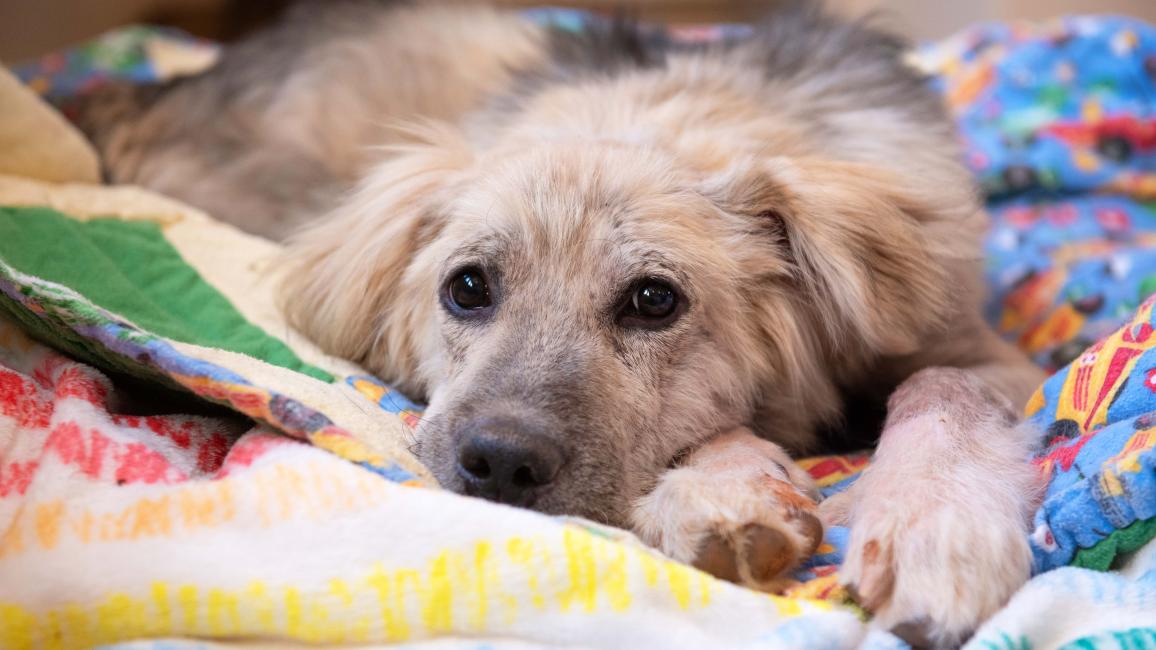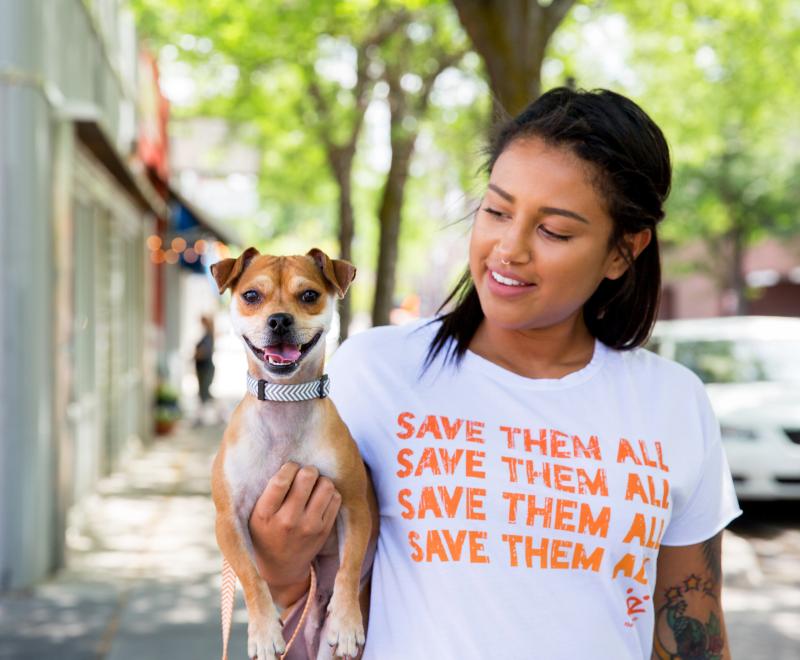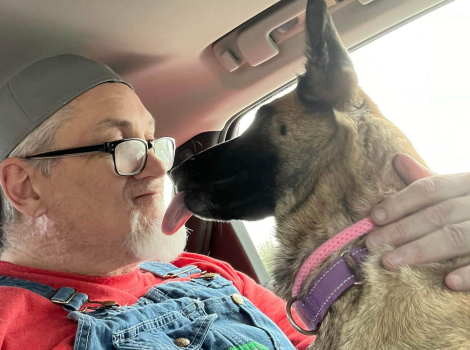Puppies go from flaky to floofy with TLC

Huckleberry, Cloudberry, and Boysenberry — affectionately referred to as the “Berry Bunch” — now spend their days enjoying cozy snuggle sessions, zoomies in the yard, and just being happy, goofy puppies. But their lives weren’t always so sweet.
When these siblings arrived at Best Friends Animal Sanctuary, they were anything but floofy. Painful, itchy scabs covered their bodies, and their fur was patchy and matted. Huckleberry couldn’t even move much due to severe inflammation in his feet, legs, and face.
“He was just so shut down,” recalls Best Friends vet tech Jess Ewing. “His siblings were able to walk around a little, but he just lay there.”
Best Friends veterinarians diagnosed the Berry Bunch with severe demodectic mange, an inflammatory condition caused by mites that results in itchy skin, sores, and hair loss. It’s not contagious to other dogs or people, but it can take months of treatment before a dog is cured. And that requires more staff time and resources than many shelters can provide.
Best Friends’ goal is for all shelters to reach no-kill in 2025, and that means working together with animal welfare organizations to save pets like the Berry Bunch, who need extra time or care.

Help is on the way
The Best Friends veterinary team immediately got to work with medicated baths and treatments to start the healing, while loving, gentle hands provided much-needed food. Each dog was bathed every other day, and with each bath, their once-weary eyes began to sparkle with hope.
“These are the cases that warm your heart,” says Jess. “When you get to see life come back into a pet’s eyes and they realize people are there to love them. We have a place where they can heal, be loved, and learn how to love life again.”

A berry good time
Their recovery was slow but steady, and just a few weeks later, they were all ready to venture out into the world. Boysenberry was first, heading to an adoptive home the first day he was available, while Cloudberry and Huckleberry are continuing their recovery in loving foster homes until they can be matched with adopters.
[6 sweet stories for National Puppy Day]
“Huckleberry was a new dog by the time he went into foster care,” says Jess. “He was up and walking around on his own, eating, drinking, being the best boy. He’s so goofy.”
And a foster home was just what the “dog-tor” ordered for sweet Huckleberry. It gave him a comfortable environment in which to heal and for his goofy, floofy self to emerge. His thick, gorgeous fur filled in, and he grew by leaps and bounds.

A soft landing
Cloudberry is also thriving in her foster home. She’s sporting a collection of stylish pajamas while she waits for her milky-white coat to grow in.
“She still had some bald spots on her nose and toward her hind end, so I kept her in pajamas so she wouldn’t get sunburned,” says her foster caregiver, Davalynn Edmonds.
[Foster family welcomes six puppies to the world]
This now-pampered pup slept on the bed with Davalynn for the first few days, tucked in safe and sound against Davalynn’s legs. Her confidence grew, and soon she was romping happily with Davalynn’s four other dogs.
“She really took to my other foster dog, Cali, and they play all the time,” says Davalynn. “She’s goofy and loves to run/trot around outside in the backyard. She even steals the toys from the other dogs while they are playing with them!”
Cloudberry's playful antics and spirited nature are flourishing now, just like those of her brothers. The Berry Bunch overcame many challenges to become the floofy, goofy pups they were always meant to be. And nowadays, they enjoy the good life and spread sweetness and love — and a dash of floofy goofiness — to everyone they meet.

Let's make every shelter and every community no-kill in 2025
Our goal at Best Friends is to support all animal shelters in the U.S. in reaching no-kill in 2025. No-kill means saving every dog and cat in a shelter who can be saved, accounting for community safety and good quality of life for pets.
Shelter staff can’t do it alone. Saving animals in shelters is everyone’s responsibility, and it takes support and participation from the community. No-kill is possible when we work together thoughtfully, honestly, and collaboratively.







